The mural painting is executed on walls or ceilings using different techniques.
It is different from all other forms of pictorial art because it is deeply linked to architecture.
It is an integral part of the place for which it was originally designed.
It is created according to a certain space. The use of colour and design and thematic treatment can radically alter the perception of the spatial proportions of the building, its chromaticism and its message.
The mural painting has been used, in different contexts and with different techniques from prehistory to the present day.
Probably due to this privileged relation with the space in which it is inserted and by the dimensions that can reach.
But also by the “force” that it can instill in the message that is intended to be transmitted.
The function and the message
Thus, mural painting appears, over time with various functions and with different types of message.
We give some examples.
Communication
The first forms of human communication, the cave paintings, are also a form of mural painting.
Example of paintings discovered in a cave located under the altar of a church, in Alegrete, Portalegre, Portugal.
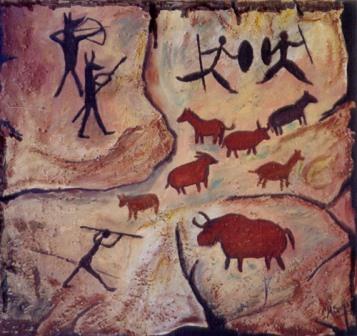
Decoration
In some cases mural painting assumes a decorative function.
Examples of this function can be found in Portugal, in friezes, frames, patterns, etc., for the decorative embellishment of the spaces.

Examples of mural painting with decorative function integrated in Monuments that are part of the Route of the Romanesque (Regions of Tâmega and Sousa, North of Portugal).
Catechism
The mural painting inside the churches constituted a privileged vehicle of communication with the believers and of catechesis.
In times when illiteracy dominated, mural painting assumed the function of transmitting biblical episodes and the life of the saints.
It was also a way of lending grandeur to the interiors of the churches.
An emblematic example can be found in the Cathedral of Saint Climent del Taull in Catalonia.
Inside the church we can admire the famous mural paintings by the Master of Taüll (contained in the different apses and the keys of the arches).
These works of art represent different aspects of Christianity that can also be found in other works of art of the same period.
The most famous fresco, of Christ in Majesty in the main apse of the church, has been moved to the Museu Nacional d’Art de Catalunya in Barcelona.
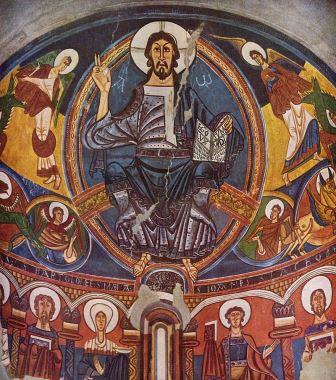
Replacement
Mural painting requires relatively low media and materials, and the execution techniques are cheaper than other types of decorative techniques.
It was thus widely used as a decorative form of substitution, for example, in the case of faux marble that we can find widely in Portuguese architecture.
In Churches
Such is the case of the Church of St. Louis of the French, in Lisbon.
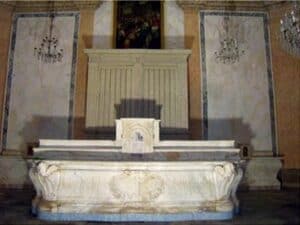
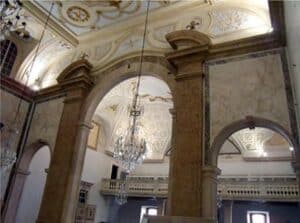
IN: Marmoreados da Igreja São Luís dos Franceses, (Lisboa): Estado de conservação, caracterização das argamassas e da camada pictórica. Luís Morais | Rita Macedo | Augusta Lima | Amélia Dionísio.
In private architecture
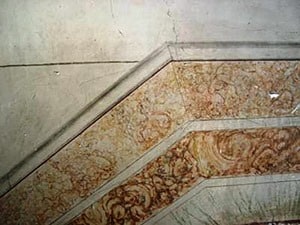
But also as a form of substitution of other elements like in the mural painting in the Church of the Salvador – Lufrei, “pretending” a retable of gilded carving.
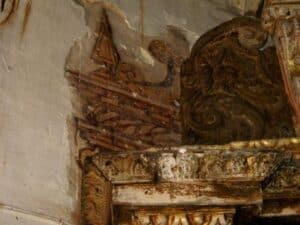
Protest
Contemporary mural painting has Graffiti as its most striking example, in the form of political protest.
At this moment it assumes the expression of art having the artist Bansky as one of the most respected names.
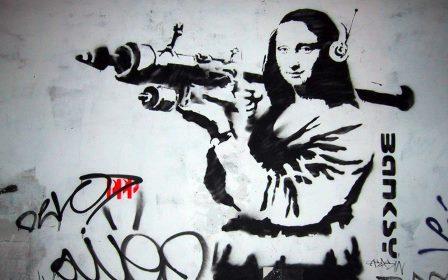 |
| Mona Lisa – Bazooka, Bansky |
So, what is mural painting
Mural painting is thus a form of artistic expression thought and created in function of the architectural space in which it is integrated and inseparable from it.
Mural painting have been used with various functions and to express different types of messages from prehistory to actuality.
We can say that it is probably the oldest form of art of humanity.
But also the first form of non-verbal and non-gestural communication.
We could not finish this article about mural painting without mentioning some of the most brilliant works in the history of art.
In these links you can discover Michelangelo’s paintings in the Sistine Chapel .
Learn more about art analysis and art history in the certified online courses
Iconography in art – a fascinating gift

Fátima Muralha
Graduated in History – Art History from the Universidade Nova of Lisbon. Post-Graduate in Management and Promotion of Heritage by the UAL. Specialised in Management of Cultural Projects. Various training courses and a specialisation course regarding Promoting Heritage, Conservation & Restoration, Museum studies and Vocational Training. Coordinator in multiple projects linked to Historical and Artistic Heritage, educational and vocational training projects in various entities. Author of several publications and communications. Creator and coordinator of the development of virtual content of the project: History | Art | Culture.


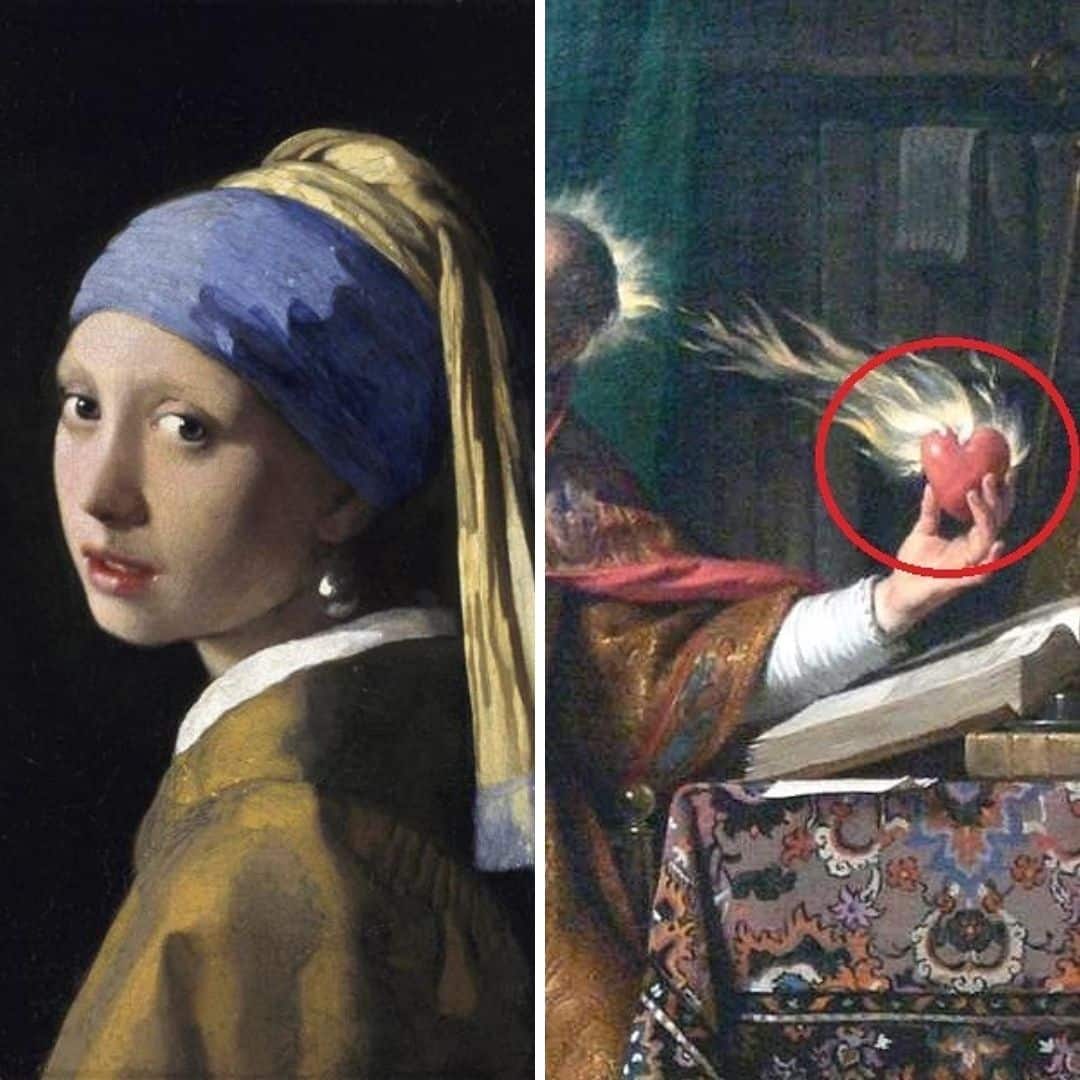
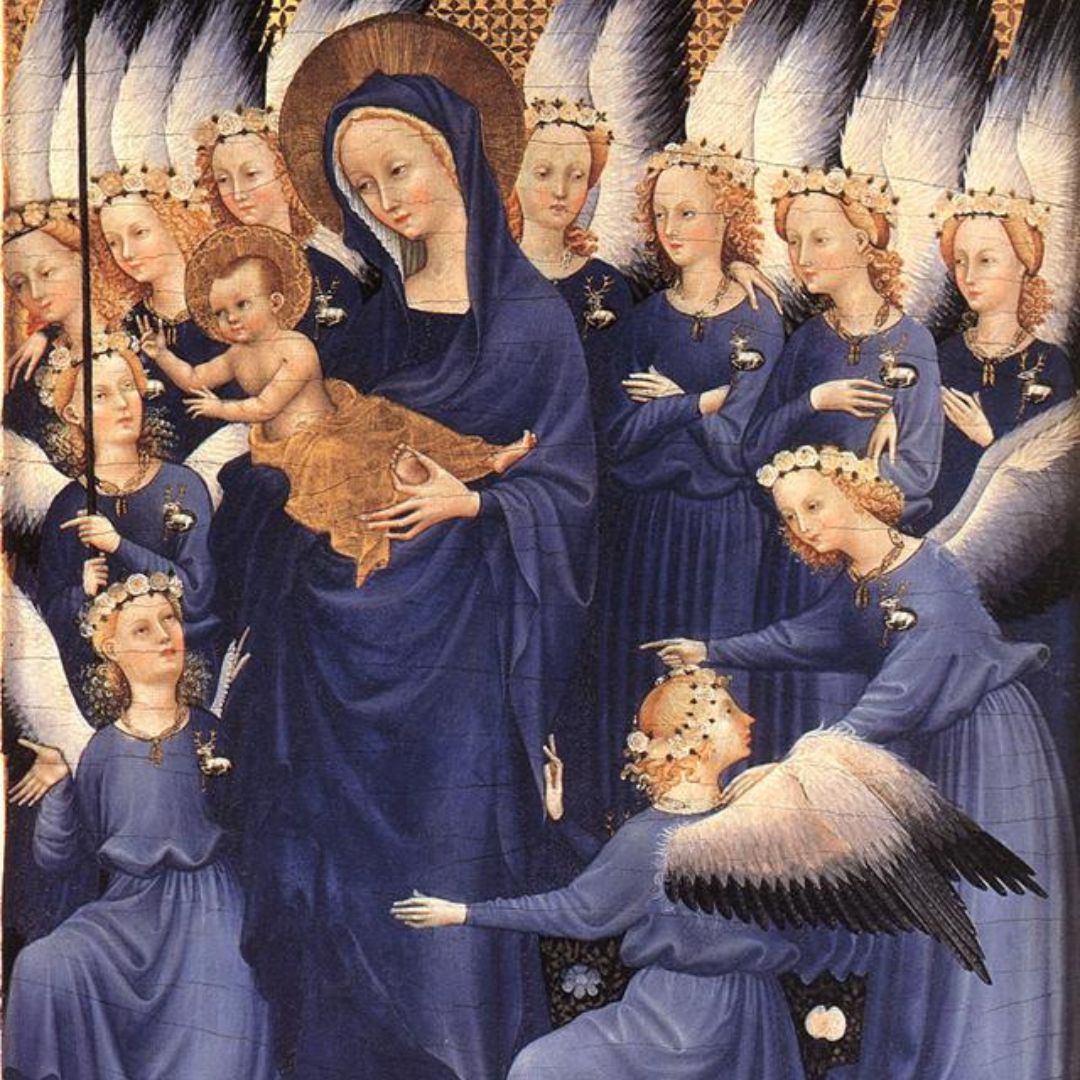
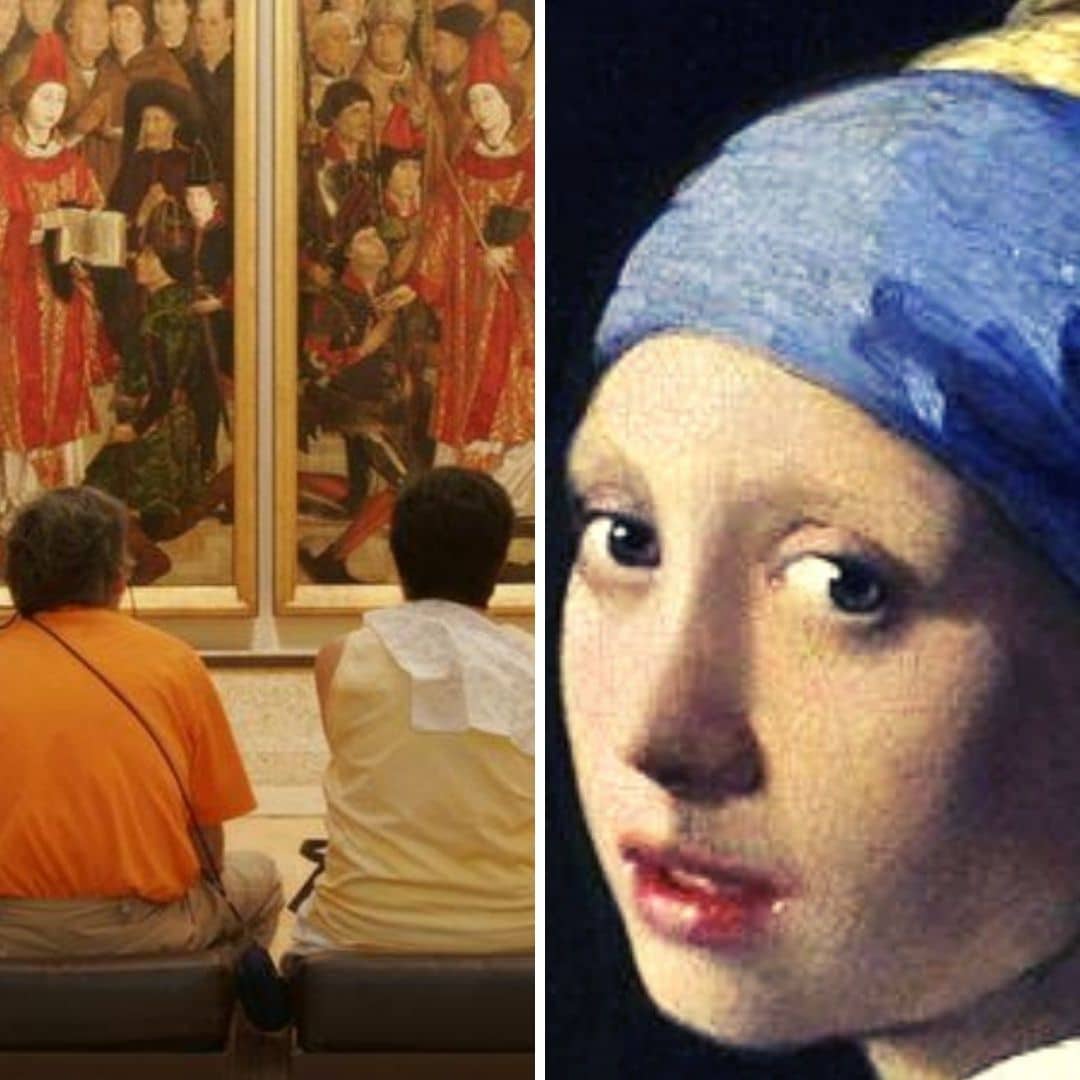
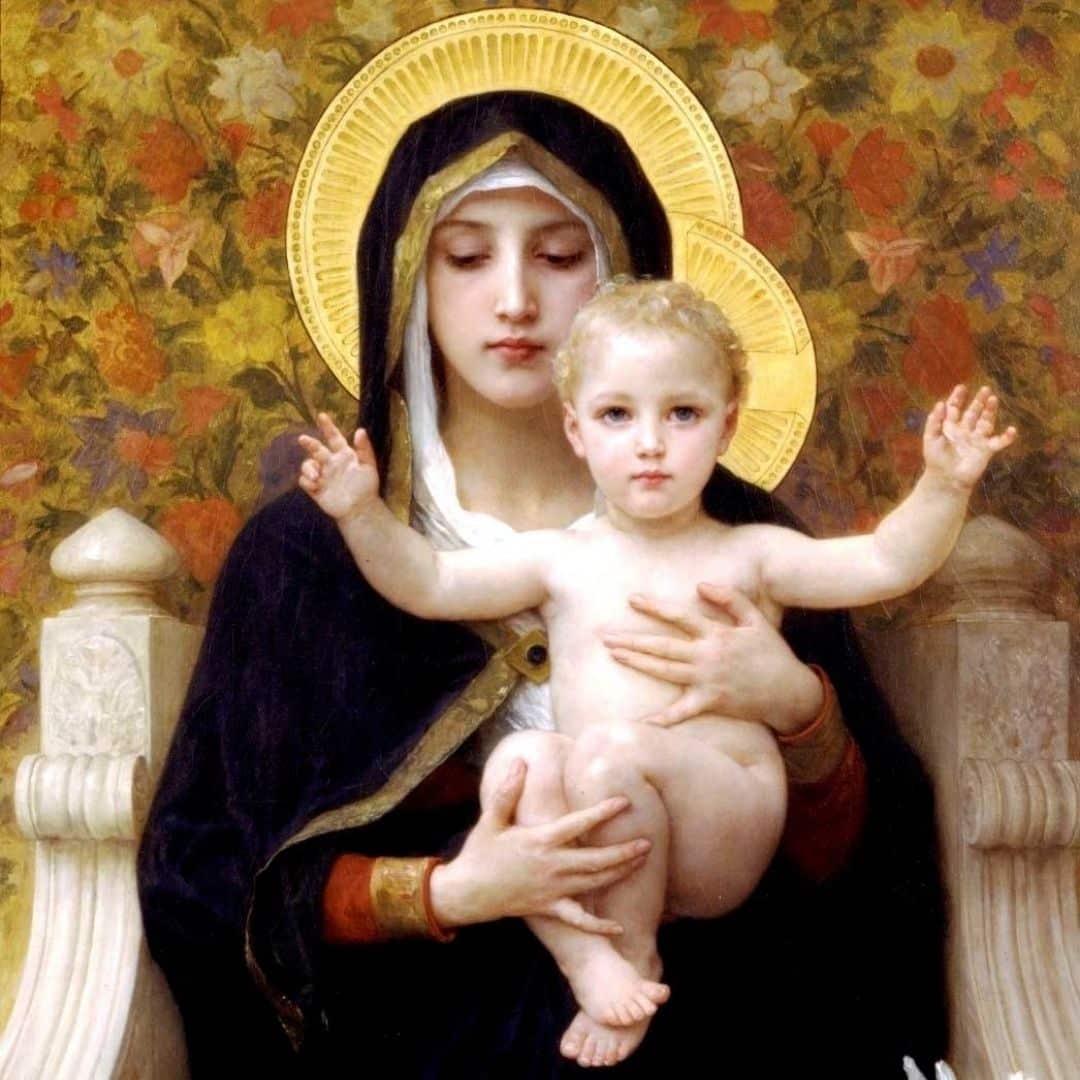
8 Comments.
This is a good analysis of painting.
I had a chance to film one of the painting close to my city. I didn’t expected that mural painting taking so much time and effort.
Thank you for this article.
Thank you for your comment.
Yes, is important to know the technique and the time and effort required to the artists.
Thank you
Mural Paintings
Nice Article
Thank You!
nice article
It’s so cool that murals used to be used as a form of substitution when they couldn’t afford fancy materials. My daughter wants to paint her wall with a mural. I think it would be a good way for her to express herself.
I like how you said that mural painting is a form of artistic expression because I think that’s important. Artistic expression helps some people communicate the things they can’t say. Murals have the chance to be really powerful.
here is the most beautiful